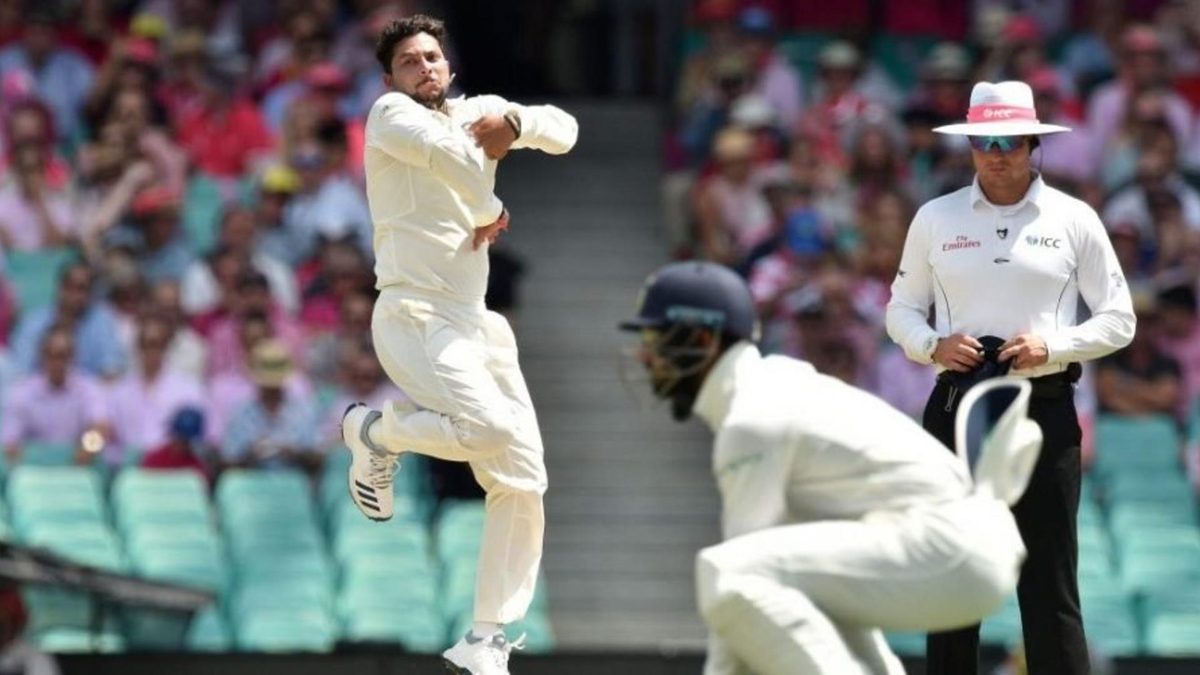
Kuldeep Yadav could be the answer to India’s Joe Root problem, if only they remembered he existed, writes Rohit Sankar.
Kuldeep Yadav last played a Test match more than 700 days ago. He last took a wicket with a red ball in a professional game more than 500 days ago. On the Australia tour, Kuldeep remained the only player from the main squad to not play a single Test, even as injuries depleted the travelling contingent.
“I know you didn’t play a game here, but I think your attitude was really good,” Ajinkya Rahane said in the post-series dressing room address that became viral on social media. Ravi Shastri was an onlooker then. Sadly, though, he seemed to have forgotten Kuldeep’s presence on that Australia tour, or the one before it, at the end of which he described the wrist-spinner as India’s “primary overseas spinner”.
While talking of the injuries during the Australia series on Star Sports, Ravi Shastri said that Kartik Tyagi was the only player to not play a Test on the tour. It seemed like he had forgotten Kuldeep entirely. In the first Test of the England series in Chennai, he was sat out despite India playing three spinners and losing Axar Patell to injury.
Really, the time is ripe for Kuldeep to make a comeback in the second Test against England starting February 13. One factor favouring the left-arm wrist spinner is the ineffectiveness of Washington Sundar and Shahbaz Nadeem in the first Test, but more prominently, the new SG ball, criticised by both Virat Kohli and Ravichandran Ashwin, might just favour the wrist-spinner.
The new SG ball has a pronounced seam and a harder core. “An important change is the seam. It is more pronounced now. The spinners especially wanted a seam which they can grip and thereby get more revolutions on the ball,” the marketing director of SG said, according to an Indian Express report.
For a wrist-spinners, revolutions on the ball are vital, with big rip one of the main advantages they have over finger spinners. None of the spinners from either side in the first Test were wrist-spinners, but notably, Ashwin and Nadeem both generated bounce off length deliveries before the seam tore away ,displeasing some of the Indian players.
Kuldeep seemed to like the look of the ball too. “They are similar to the SG balls I bowled with when I started playing cricket,” he said in a recent interview on ESPNCricinfo.
This by itself presents a case to include Kuldeep in the XI. But the bigger factor could be Joe Root and his sweep shots. Root is prolific with his ability to read the length of the spinners and sweep from the rough, but Kuldeep’s uniqueness – the arm he bowls with and the action he puts on the ball – could plant some doubt in Root’s mind about unleashing his preferred shot against spinners. With a field setting taken from Manoj Tiwary’s manual, India could think about setting up a trap for the England skipper with Kuldeep.
A handy wrong ‘un and pace variations – a criticism often levied against Kuldeep is the lack of pace on the ball – picked up in the nets in Australia completes the Kuldeep package. As an attacking option, especially in phases of play where India struggle to find a breakthrough, a left-arm wrist spinner like Kuldeep would be more handy than a holding bowler.
Notably, though, it was Root who first unravelled the Kuldeep mystery, albeit in a limited-overs series in England in 2018. The youngster had dominated the opening stages of the tour, taking five wickets in the first T20I and six in the first ODI. Root, with two centuries in two games turned the ODI series around in England’s favour.
But now, with pace variation up his sleeve and a harder ball that could grip and bounce more, Kuldeep on a sluggish Chennai wicket could pose more of a challenge than what the finger-spinners did in the first Test. If India are to get past Root, they might need something different, and different is what Kuldeep does best.








